If you’re a fan of yoga, you might wonder whether repeating the same daily routine is the best way to go. Some argue that varying your exercises can help improve your abilities and prevent you from becoming bored with your performance. But is this really true and what does it all mean for you? In this post, we’ll explore the ins and outs of yoga routines and help you determine the answer to the question “Should you do the same Yoga routine everyday?”. Whether you’re a beginner or more advanced, read on to learn more about the benefits and drawbacks of repeating the same yoga routine everyday!
What is a yoga routine?
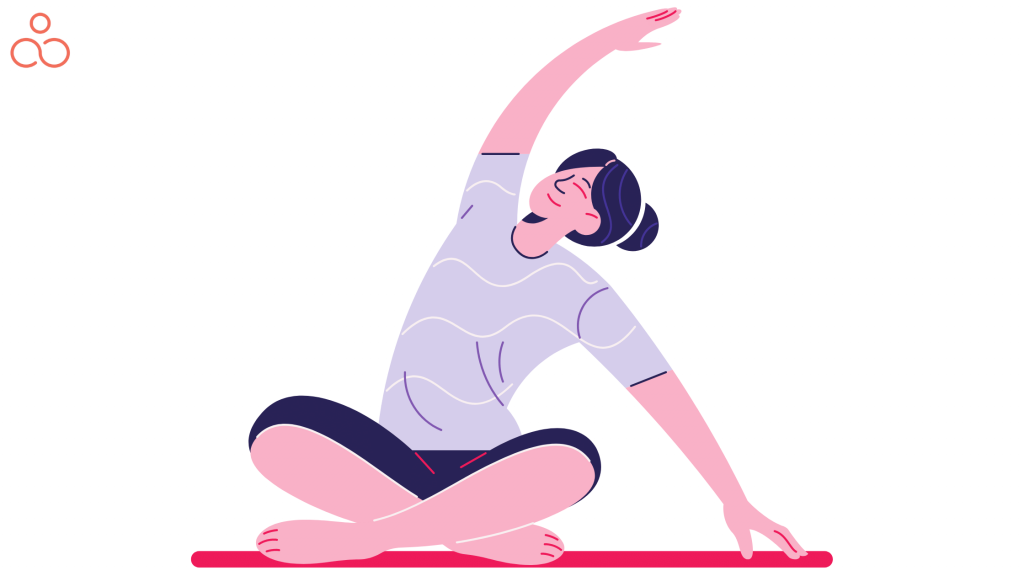
A yoga routine is a habitual sequence of yoga poses and exercises that one performs in a specific order to achieve physical and mental benefits. It includes various yoga poses (asanas) that aim to promote flexibility, balance, strength, and relaxation. The routine may also consist of breathing exercises (pranayama) and meditation that help to reduce stress, increase energy levels, and improve overall well-being. Regular practice of yoga can improve both physical and mental health by increasing flexibility, muscle strength, and improving posture.
Additionally, it can result in mental clarity, self-awareness, and spiritual development. To determine if a regular yoga routine is necessary for you, evaluate your goals and lifestyle. If you want to enhance your well-being, practising yoga can be useful. However, if you cannot commit to a regular routine or do not enjoy it, it may not be necessary. With commitment and persistence, one can develop a suitable routine that meets their needs and schedule. Listen to your body, modify poses as required, and seek clear guidance and support.
Who should have a yoga routine?
People of all age groups and fitness levels can benefit from a yoga routine. Whether you want to improve flexibility, reduce stress, get a good workout, or try some advanced hip opening yoga poses, yoga can help you achieve your goals. Regardless of your experience level with fitness or yoga, some modifications and variations can be made to accommodate any individual.
How to make a yoga routine?

In order to build a solid yoga routine, it’s essential to take specific steps to ensure that you get the maximum benefit from your practice. Here are 10 steps that will guide you on how to build a yoga routine:
- Set your intention
Set your intention before making a yoga routine. Take a few moments to sit quietly and reflect on what you hope to gain from your practice. This could be anything from physical benefits like increased flexibility or strength, to mental benefits like stress relief or a sense of peace. Once you have a clear intention in mind, hold onto it throughout your practice and let it guide your movements. You may choose to repeat your intention silently to yourself throughout the practice, or visualise it in some way. Remember that your intention can change from day to day, so don’t feel like you’re locked into something once you’ve set it. Keep an open heart and mind, and let the practice guide you.
- Start with a warm-up
A good yoga routine should always start with an introduction. To warm up before making a yoga routine, it’s important to perform some gentle stretches to prepare your muscles and joints. Some good warm-up exercises include neck rolls, shoulder shrugs, cat-cow stretches, and standing forward folds. It’s also important to focus on deep breathing during your warm-up to help calm your mind and prepare your body for your yoga practice.
- Choose the suitable poses
Depending on your intention, you’ll want to choose the correct postures to incorporate into your routine. Some poses are more restorative, while others are more strength-building. Make sure to choose poses that align with your intention and that are appropriate for your skill level. It’s important to listen to your body and choose poses that feel comfortable and are appropriate for your skill level.
- Focus on alignment
Focus on alignment before creating a yoga routine. It is important to first understand the correct alignment for each yoga pose. This can be done by observing proper alignment in classes or online tutorials, and practising with the guidance of a certified yoga teacher. Once you have a solid understanding of alignment, you can then begin incorporating those principles into your own routine, making adjustments as necessary to ensure that every pose is performed with correct alignment and safety.
- Incorporate breath work
Incorporating breath work before making a yoga routine can help improve mindfulness and bring more awareness to the body. A simple way to incorporate breath work is by starting with a few minutes of deep breathing exercises, such as equal ratio breathing or ujjayi breathing, before beginning the yoga routine. This can help calm the mind and body, deepen the practice, and reduce stress and anxiety.
- Include a relaxation pose
A good relaxation pose to include before making a yoga routine is Savasana, also known as Corpse Pose. This pose helps to calm the mind, reduce stress and anxiety, and create a sense of relaxation in the body. To do this pose, lie flat on your back with your arms at your sides, palms facing up, and your legs slightly apart. Close your eyes and take slow, deep breaths while you relax each part of your body, starting with your toes and working your way up to the crown of your head. Stay in this pose for 5-10 minutes or as long as you like, and then slowly come out of it when you’re ready.
- Be consistent
One way to be consistent during your yoga routine is to schedule a specific time each day for your practice and make it a priority. You can also try setting goals for yourself, such as practising a certain number of times per week, and tracking your progress to stay motivated. Additionally, finding a supportive community or partner to practise with can also help you stay accountable and consistent in your yoga routine. Remember to start small and gradually increase your practice over time, as consistency is key to seeing progress and reaping the benefits of yoga.
- Stay present
Stay present during your yoga routine and focus your attention on your breath and the sensations in your body. Try to let go of any distracting thoughts or outside concerns and fully engage in the present moment. If your mind starts to wander, gently bring your attention back to your breath and the movements of your body. Remember, the practice of staying present takes time and patience, so be kind to yourself and keep trying.
- Practice self-care
Self-care is super important for any wellness routine. Make sure you take care of yourself not only when you’re doing yoga, but in your daily life too. This means getting enough rest and eating foods that are good for you. When you’re doing your yoga practice, you can take care of yourself by taking some deep breaths, setting goals for your practice, using props to help you, changing poses if you need to, and taking breaks if you need them.
- Enjoy the process
To have maximum enjoyment during your yoga routine, focus on every breath and movement. Don’t forget to take the time to relax and enjoy the benefits of your practice. Your yoga journey is more important than reaching any destination. Enjoy the process and know there is always an opportunity for growth and improvement.
Should you do the same yoga routine everyday?
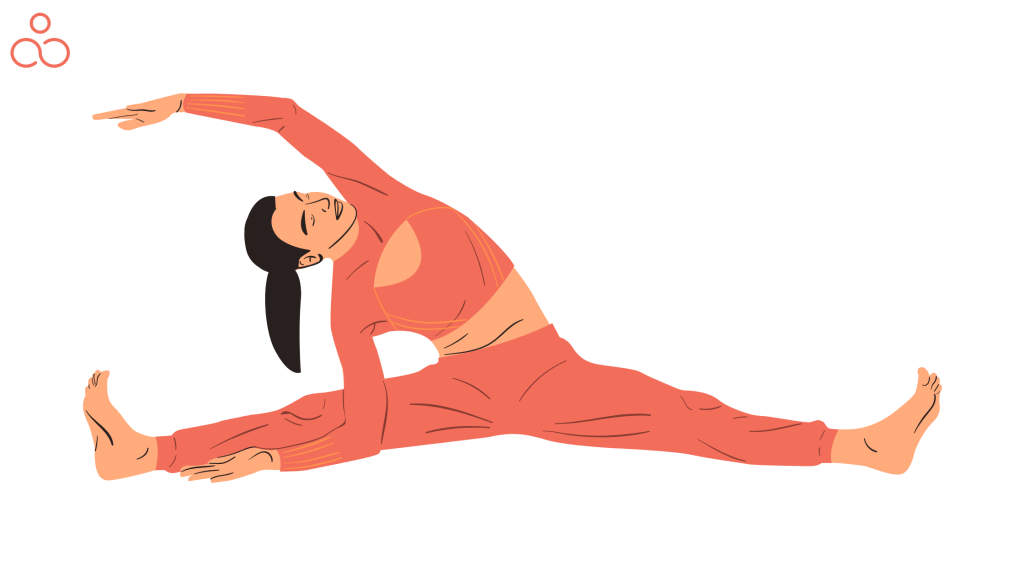
- Before deciding on a yoga sequence to practise, you need to understand your own body and its needs.
- For some people, doing the same sequence daily can be calming and provide security. This can be beneficial for those with anxiety or chronic lower back pain.
- On the other hand, some individuals benefit from a more varied routine. This type of practice can help reduce overall pain and release any built-up tension in the muscles.
- If you’re just getting started, try picking one pose at a time to start, to determine how your body responds to it.
- If you are experiencing restricted breathing, sudden fatigue, or energetic feelings during yoga, it may be an indication that emotions are being released from your body.
- As you practise yoga, it is important to check in with yourself and ask how you feel in the present moment.
- If you are feeling overwhelming sensations or emotions, it is okay to take a break and revisit the pose at a later time.
- There are no right or wrong answers when exploring your inner wisdom and intuition.
How frequently should you practise your yoga routine?
- The frequency of practice is a personal matter when it comes to activities like yoga. Age, time, health conditions, and enthusiasm should all factor into the equation.
- Listen to your body and tailor your workout according to your objectives and needs. It’s generally advised to start off with two to three sessions in a week, particularly in the beginning.
- As you become more accustomed to it and get into a comfortable rhythm, you may feel capable of taking on more than six sessions every week.
How to determine the ideal length of your practice?
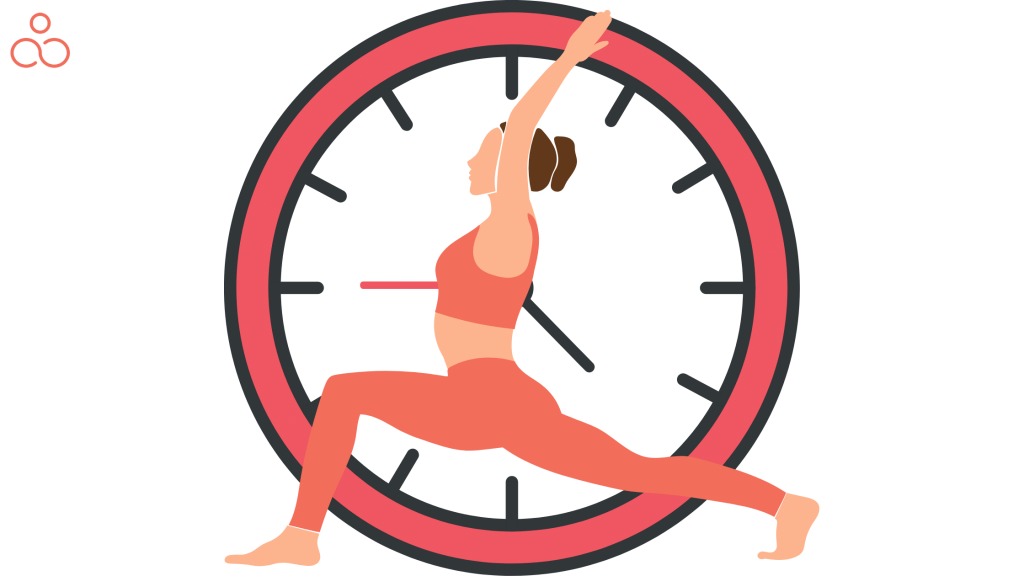
- When it comes to yoga practice, there is no right or wrong answer regarding how long or short it should last.
- It’s all up to you and what works best for your schedule and body.
- If you only have 10-15 minutes to spare before or after work, that’s completely fine.
- A 15-minute morning routine, or a simple 3-exercise mobility routine, could be just what you need to start your day.
- However, if you have a bit more time on your hands, you can try a longer yoga session.
- That being said, it’s important to pay attention to your body and avoid overloading your joints.
- Also, focusing on fewer poses and executing them properly is better than doing too many poses incorrectly.
- A longer practice allows you to take your time with each pose and take part in an extended relaxation session at the end, which has benefits for your physical and mental health.
Try these 5 fun ideas to spice up your yoga routine
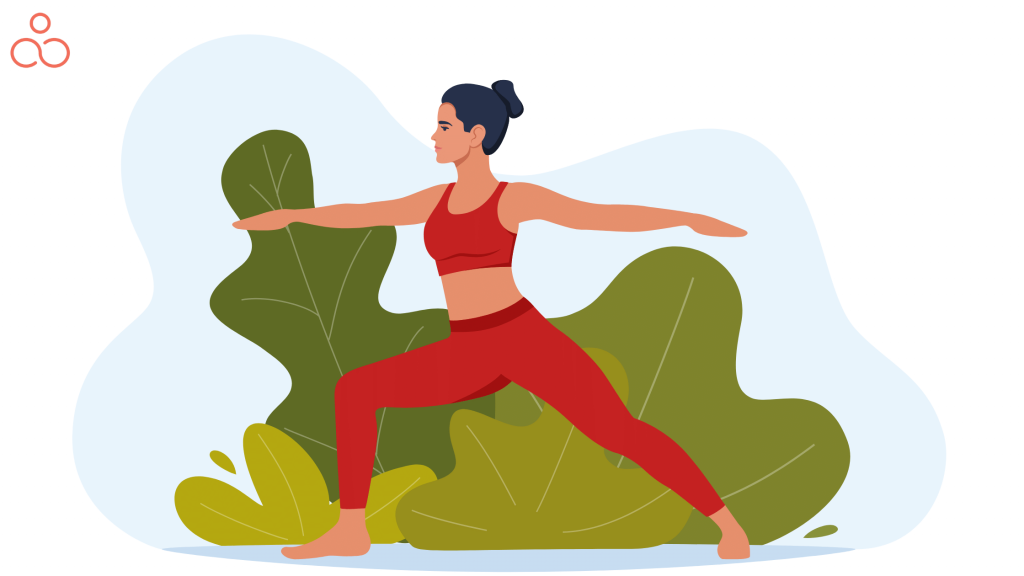
If you find yourself getting bored with your yoga routine, you’re not alone. Any repetitive activity can start to feel tedious over time. However, there are simple ways you can make yoga more interesting and engaging again.
- Switch up your environment
One effective strategy is to switch up your environment. Consider moving your yoga mat to a new location, changing which room you practise in, or adjusting the lighting in your space. If you typically practise under a teacher, try finding a new studio or experimenting with different instructors.
- Keeping your yoga routine exciting
Another way to keep your yoga routine exciting is by changing up the times you practice throughout the day. These simple alterations can add new energy to your practice and reignite your love for yoga.
- Incorporating props
For those looking to enhance their yoga practice, incorporating props can be a helpful way to improve certain poses. Options, like straps can provide added support for backbends, using a chair or bench, can aid in achieving upside-down positions, and a bolster can offer increased comfort during your session.
- Adding music
If you’re looking to enhance your yoga practice, adding music might be a good idea. While it might not be everyone’s cup of tea, background music can help you relax or boost your mood. If you’re already using music, consider switching up your playlist by exploring the myriad of options available online.
- Adding new asanas
Make your yoga routine more dynamic with the addition of new Asanas. To broaden your practice, why not try a different yoga style? For example, if you usually practise Vinyasa, why not switch it up with a Yin or Hatha session? Give it a go and you might find something that works wonderfully for you!
Pros of doing the same yoga routine
There are numerous benefits to practising the same yoga routine every day. Here are the important ones:
- Establishes a Habit
Practising yoga every day helps to establish a healthy habit. Consistency in the practice helps to make it easier and less of a chore over time. Once yoga becomes a routine part of your daily schedule, it becomes second nature and you don’t have to put as much effort into motivating yourself to practise.
- Creates Discipline
Developing a daily yoga practice takes discipline and determination. This helps to create a strong sense of discipline that can be applied to other areas of your life.
- Improves Focus
Practising the same yoga routine every day can help to improve your focus and concentration. As you become more familiar with the routine, you can focus more on your breath and tune out distractions. When you don’t have to think about what pose comes next, you can focus more on your breath and the sensation in your body. This can help you to deepen your practice and quiet your mind.
- Increases Flexibility
By practising the same routine every day, you can gradually increase your flexibility. As you become more familiar with the movements, you can deepen the stretches and hold them for longer periods of time.
- Reduces Stress
Did you know that practising some specific yoga poses has shown to reduce stress and anxiety? Hence, incorporating these poses into your daily yoga routine helps to create a sense of calm and grounding that can stay with you throughout the day.
- Builds Strength and Endurance
Practising the same routine every day can help to build strength and endurance. As you become more comfortable with the movements, you can hold them for longer periods of time and move more fluidly between postures. This constant repetition helps to build strength and create muscle memory. Doing the same yoga routine every day has numerous benefits. Here are six pros of sticking to a consistent yoga routine:
- Mastery
Consistently practising the same routine allows you to master the sequence and the poses. Over time, you’ll find it easier to hold the poses and deepen them, improving your form and overall practice.
- Time efficiency
Since you’ll be familiar with the sequence, you can move through it more quickly and efficiently. This can be helpful if you have a busy schedule but still want to maintain your yoga practice.
- Reduce injuries:
By doing the same routine, you’ll be more aware of your body’s limitations and potential areas of discomfort or pain. This awareness can help you to avoid injuries and prevent fatigue or burnout.
- Consistent progress
Practising the same routine allows you to track your progress over time. You’ll be able to see improvements in your flexibility, strength, and balance, which can be very motivating and encouraging
Cons of doing the same yoga routine every day
Practising yoga regularly has numerous health benefits, but doing the same routine every day comes with some drawbacks. Here are the cons of doing the same yoga routine every day:
- Boredom
Doing the same yoga routine every day can become monotonous and boring, leading to a lack of motivation to keep up with the practice.
- Plateauing
When you consistently practise the same routine, your body may stop responding to the movements, and you may not see any progress in your flexibility or strength.
- Overuse Injuries
Repeating the same movements can put a lot of strain on certain muscles and joints, leading to overuse injuries like strains, sprains, or tendonitis.
- Muscle Imbalance
When you consistently perform the same yoga poses, your body develops muscle memory, and you may end up overusing certain muscles while underusing others, leading to muscle imbalances that can cause pain or injury.
- Limited Benefits
Different yoga poses work various muscles and systems in the body. By repeatedly doing the same routine, you may limit the benefits of your yoga practice.
- Reduced Mindfulness
Doing the same yoga sequence on a daily basis can lead to a reduced level of mindfulness. Instead of paying attention to your breath and body, you may perform the same sequence mindlessly, reducing the mental benefits of yoga.
- Mental Strain
Doing the same routine every day can be mentally draining, which can lead to a decrease in mindfulness and mental clarity during your yoga practice.
How to practise then?
Wondering if you should mix up your yoga routine or commit to a daily practice? Here are a few situations to consider when deciding what’s best for you.
Firstly, if you’re a young yogi who enjoys a challenging routine, it’s a great idea to vary your practice – including vinyasa flows for energy and strength, as well as restorative poses to help you balance and avoid injury.
Secondly, if you’re an older yogi in need of a gentler practice or looking to heal specific areas, focusing on those areas each day can be beneficial.
Thirdly, make sure to include warm-ups and cool-downs, and adjust the routine as needed to fit your body’s needs.
Discover the different types of yoga you can incorporate into your routine
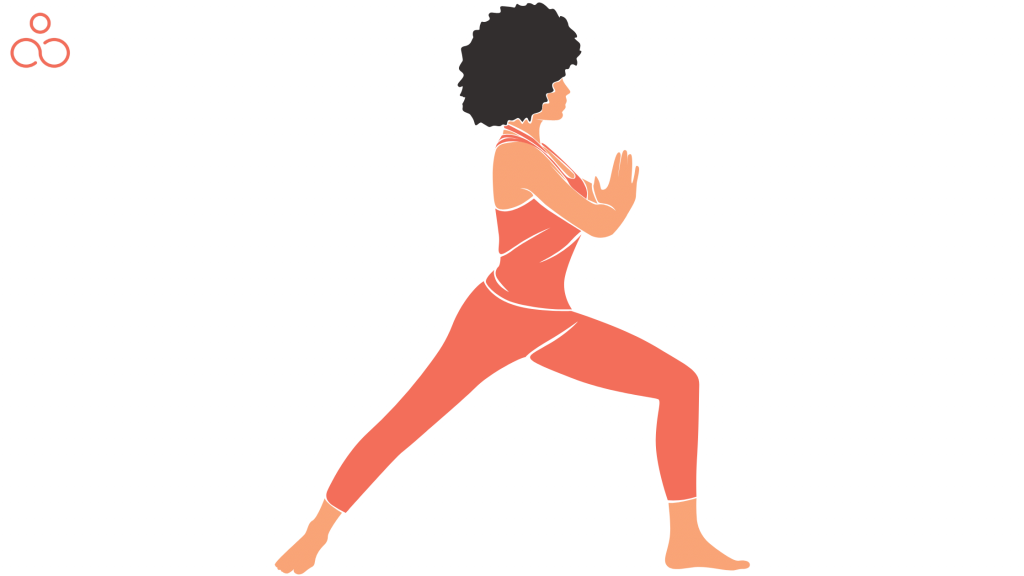
Yoga is a popular activity with many styles available, both traditional and modern. Neighbourhood gyms and studios offer some more than others. Here are five commonly offered types and their unique benefits:
- Ashtanga Yoga
It is a well-known and demanding technique. It increases strength and flexibility and helps enhance the self-control of the mind and body. It’s an excellent choice for weight management and stress reduction, thanks to its focus on breathing control.
- Hatha Yoga
It is a classic style of yoga that emphasises controlled breaths and meditation. It’s perfect for those just starting out, and can also be used as a go-to workout routine.
- Vinyasa Yoga
If you’re looking for a more dynamic option, then Vinyasa Yoga is the perfect choice. With its combination of postures, it’s great for those who want a more active experience. Practising Vinyasa Yoga can help improve your lung capacity, focus, and self-control.
It is a spiritual practice rooted in meditation. Its basic postures are perfect for individuals looking to relax and cultivate self-reflection.
- Iyengar Yoga
It focuses on spinal alignment and posture, making it excellent for beginners, seniors, or those recovering from injury. This yoga method promotes slow movements and intense focus, which helps build strength and improve body alignment. It’s also a great way to tone the body.
Tips to enhance your home yoga practice
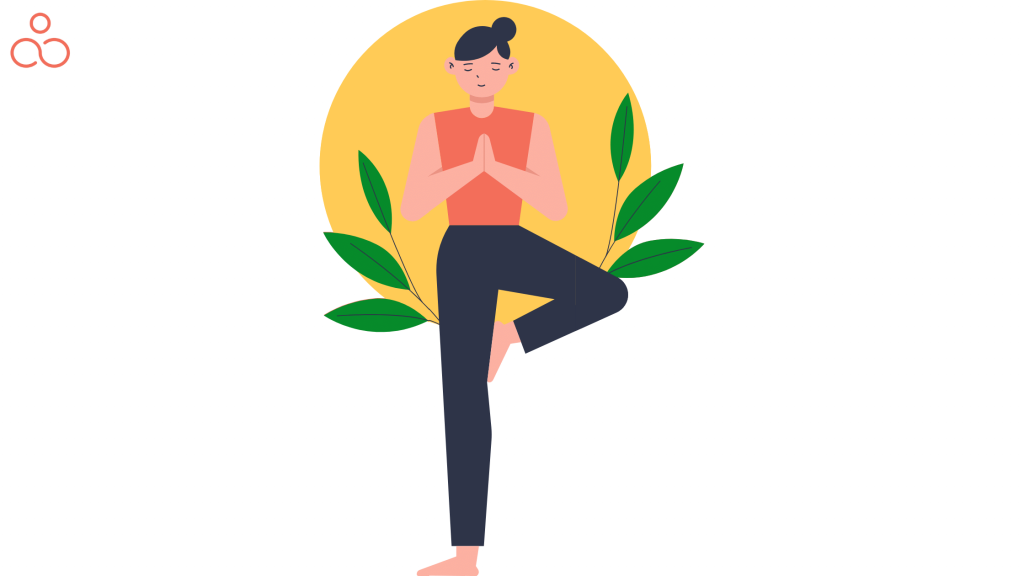
- Incorporate Ashtanga Yoga
For those looking to build consistency in their yoga practice, Ashtanga Yoga offers the perfect solution. This practice provides a specific sequence of poses, removing the need for deciding what pose to do next. This in turn allows you to focus on deepening your meditation practice and developing your breath, bandhas, and drishti. By repeating the same poses daily, you can observe how your body and mind change over time. In the end, you’ll likely find yourself feeling more centred and present.
- 15 minutes bliss
Making a habit of practising anything, even if it’s just for 15 minutes every day can really help build your skills. It’s important to start small and commit to doing just those 15 minutes. That way, even if you don’t have a lot of energy on a particular day, you can still maintain your commitment and feel accomplished. Remember, anything you do beyond those 15 minutes is just a bonus!
- Creating your own zone for better focus
Creating a special space in your home for yoga can help you focus on your practice. Setting up an altar or marking the space in a meaningful way with a picture, token, or candle can help make it feel special. To make the most of this sacred space, switch off any distractions like your phone, music, or laptop. Also, let your housemates know about your practice time so you can have an uninterrupted session. When it comes to yoga, it pays to prioritise and sanctify your practice!
- Focus on you breathing
Nourish your body and soul with a few moments to focus on your breathing. Try a calming practice like pranayama or mantra meditation and you’ll quickly find peace and tranquillity. Even just three minutes of mindful breathing can make a big difference! As you keep at it, you’ll discover that having strong concentration through asana, drishti, bandhas, and breath control will help you improve your meditative practice.
- Invest time on inverting too
Inverting can improve your health in many ways! Shoulder-stand, headstands, and viparita karani are all great ways to get the benefits. In addition to the physical benefits, inverting can also help you clear your mind and gain a fresh perspective. After just a few minutes of hanging out upside down, I feel happier and more positive about life.
- Consistency is the key
Practising regularly is essential to maintaining a high level of skill. To get the most out of your practice, set aside time every few weeks for a tune-up. Additionally, consider taking a few classes or joining a workshop led by a top-notch teacher. Not only will this reveal where you need to focus, but it’ll also give you the drive and motivation to keep up a daily home practice.
- Utilise the resources around you
Utilise the resources surrounding you to your advantage. If you are feeling a little stuck and uninspired, take a breather from your regular routine and seek help. You can enhance your knowledge by reading online blogs and yoga websites or enrolling in an online yoga class in case of the unavailability of physical classes.
- Mixing up is fine
It’s okay to mix up the order of poses in your yoga practice. Experiment with a Vinyasa flow or other forms to keep it interesting. Just make sure to incorporate a variety of poses to ensure a balanced practice.
FAQs
Is common yoga good for maintaining consistency in your practice?
Yes, a yoga routine can be incredibly helpful for maintaining consistency in your practice. By establishing and sticking to a regular schedule, you can form healthy habits that support your physical, mental, and emotional well-being. Whether you’re a seasoned yogi or just on the verge of starting out, a routine can help you stay accountable and motivated to continue your practice. So if you want to maintain consistency and make the most of your yoga practice, consider establishing a regular routine!
Can you still do yoga without building a yoga routine?
Yes, you can absolutely still do yoga without having a formal routine in place. In fact, many people find that by simply taking a few minutes each day to do some gentle stretching, they’re able to reap the benefits of yoga without feeling overwhelmed or intimidated by a more disciplined routine. Whether you’re a seasoned practitioner or just starting out, there are plenty of ways to incorporate yoga into your daily routine and start experiencing the numerous physical and mental benefits it offers. So don’t be afraid to start small and work your way up – with a little effort and dedication, you can achieve your yoga goals and feel better than ever before.
Is it professionally recommended to have a yoga routine?
It depends on the individual and their specific needs. Still, many professionals believe that incorporating a regular yoga routine can have numerous physical and mental health benefits. It can help improve flexibility, strength, and balance, as well as reduce stress and improve overall well-being. Of course, it’s always best to consult with a healthcare professional before starting any new exercise routine.
How is it like to have a yoga routine?
Having a regular yoga routine can provide many benefits, such as improved flexibility, reduced stress, and increased mindfulness. It may help you feel more centred and focused throughout the day. If you are new to yoga, starting with beginner poses and gradually building up to more challenging ones is essential. Your balance, strength, and overall well-being improve significantly with consistent practice.
What to do if you don’t have any time to follow a yoga routine?
There are several ways to incorporate yoga into your day, even if you don’t have time for a full practice. Consider taking a few minutes in the morning to do some simple poses or stretches to wake up your body and mind. Throughout the day, take breaks as needed to do short breathing exercises or meditation sessions. You can also incorporate yoga into your daily tasks, such as doing poses while brushing your teeth or waiting in line. Remember, any amount of yoga is beneficial for your well-being.
Is a yoga routine still necessary if you join a yoga class?
It’s a common question whether a yoga routine is still necessary if you join a yoga class. The answer is that it really depends on your personal goals and needs. Suppose your goal is to improve your flexibility and strength. In that case, doing a yoga routine on your own and attending class could be beneficial. However, enjoy the social aspect of attending class and find that it provides enough physical activity for you. A routine outside of course may not be necessary. Ultimately, it’s up to you to determine what works best for your body and your goals.
Is following a yoga routine twice a week good?
When it comes to practising yoga, some people find it beneficial to follow a routine every day. In contrast, others prefer to do it twice a week. Both options have advantages and disadvantages, so it depends on your needs and lifestyle. If you have a busy schedule or limited time, practising twice a week may be more realistic. In contrast, a daily routine may be more appropriate if you have more time and want to fully immerse yourself in practice. Ultimately, the key is to listen to your body and do what feels best for you.
How often should a beginner practise the same yoga routine?
If you’re new to yoga, it’s best to start with two or three sessions per week. This will help your body adjust to the stretches and poses you’ll encounter as you progress in your practice. A quick 15-minute session will do the trick, providing muscle tension relief while also lifting your mood as your brain’s chemistry changes. Starting with a single pose is a good idea. It’s important to create a connection between you and your body, so listen to your instincts and make sure you’re comfortable with what you’re doing.
Conclusion
The benefits of doing the same Yoga routine every day can include developing a greater mastery of the poses, improving flexibility and strength, and promoting a sense of calm and relaxation. However, it’s essential to listen to your body and vary your routine to prevent boredom and avoid overuse injuries. Ultimately, deciding whether to make the same pattern every day depends on your personal preferences and goals.

